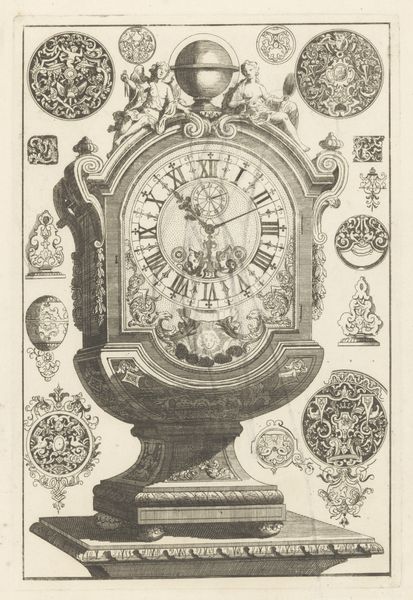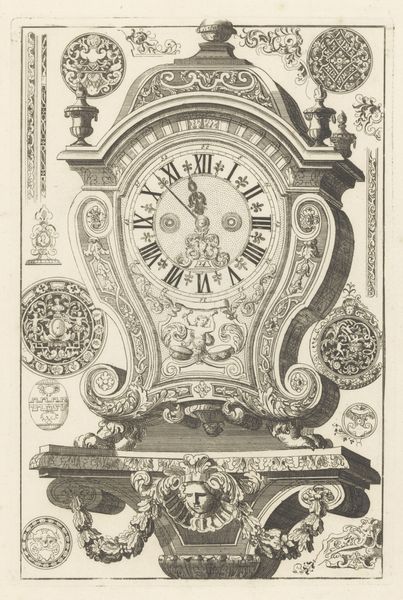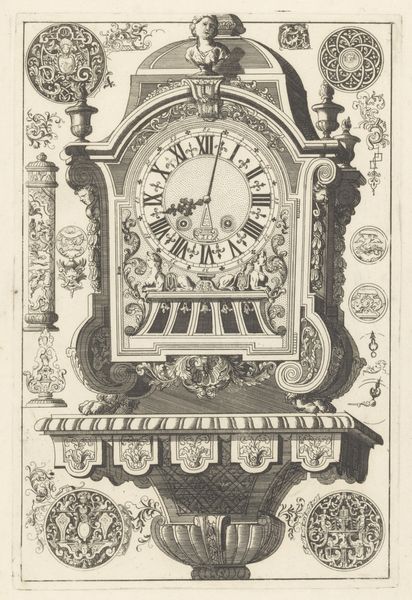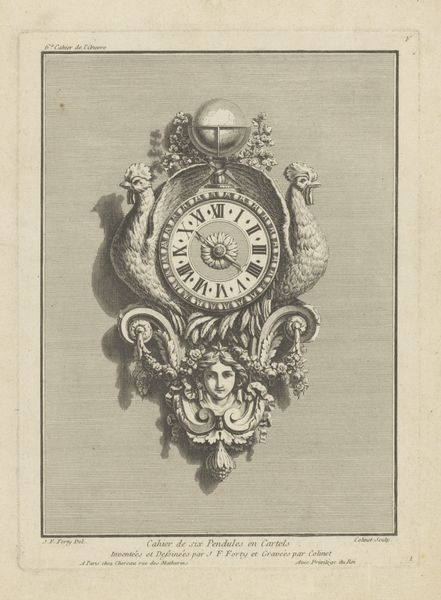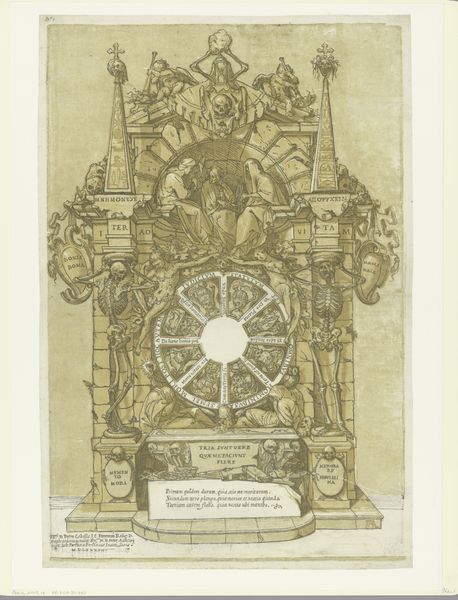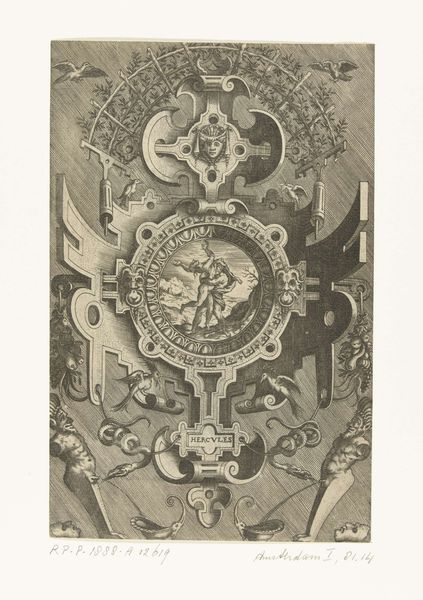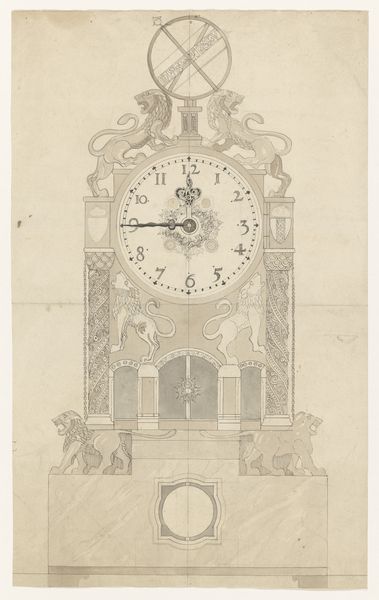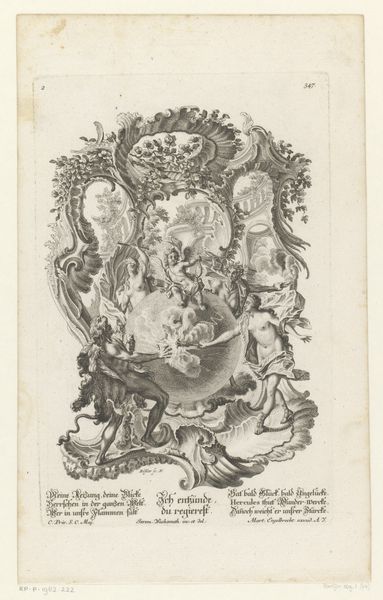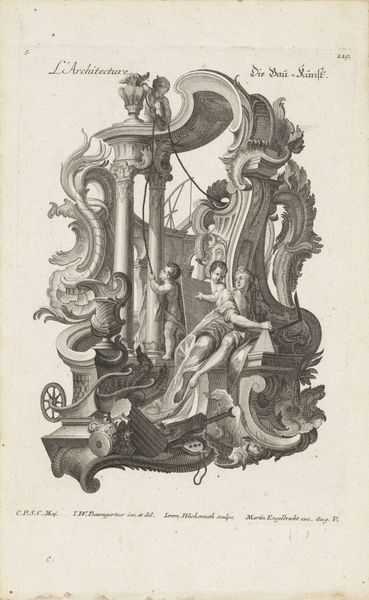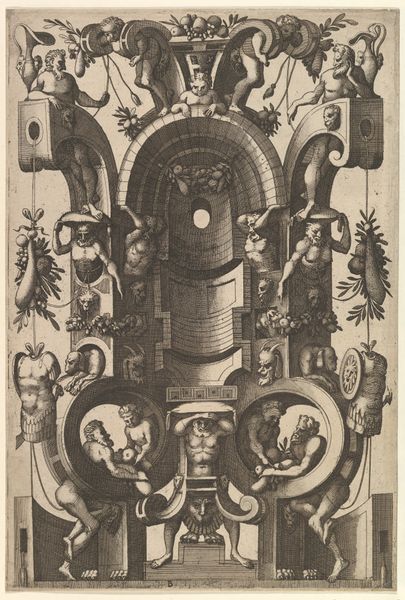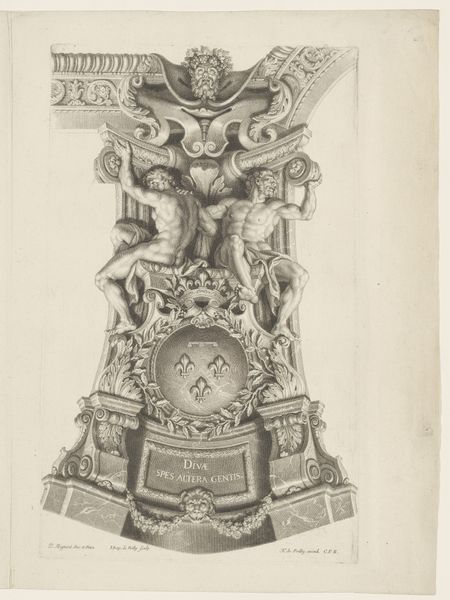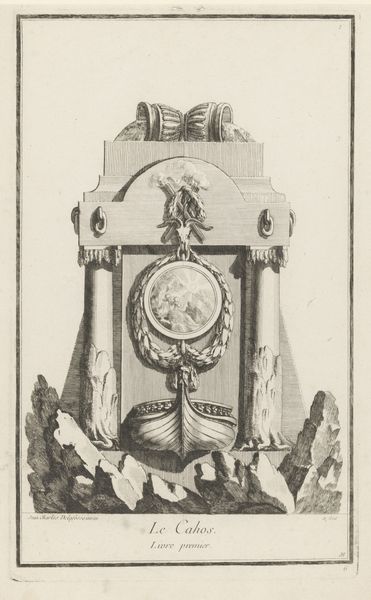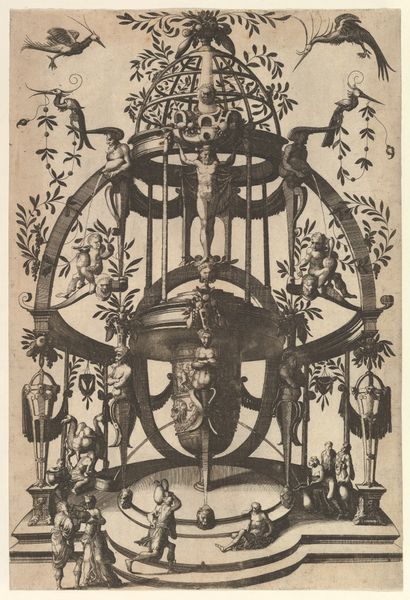
print, engraving
#
baroque
#
pen drawing
# print
#
old engraving style
#
illustrative and welcoming imagery
#
decorative-art
#
engraving
Dimensions: height 277 mm, width 188 mm
Copyright: Rijks Museum: Open Domain
Editor: This print, titled "Pendule met Dag en Nacht," made after 1706, is attributed to an anonymous artist. It’s currently held in the Rijksmuseum and the materials listed are engraving and print. I find its intricate ornamentation quite captivating. What do you see in this work that might elude a casual observer? Curator: Initially, the viewer's eye is drawn to the symmetrical balance meticulously achieved through baroque embellishments, creating a rhythmic visual cadence. Consider the pendulum clock centrally positioned: its circular face mirrors the array of smaller circular motifs surrounding it. Have you noticed how this repetition impacts the work's structural integrity? Editor: Yes, I see the repetition now! It’s like the circles are echoing the shape of the clock face itself. It gives the piece a sense of cohesion, doesn't it? Is there a theoretical approach we could apply here? Curator: Certainly. Structurally, we can interpret this as a system of signs and symbols, analyzing each visual element – the garlands, the figures of day and night, the crests, and of course, the clock's numerals themselves – as signifiers that, in their totality, articulate themes of temporality and perhaps, even mortality. It is about controlling chaos through idealized form. What else stands out to you about the work’s intrinsic composition? Editor: Now that you mention it, the interplay of light and shadow really does give it a theatrical, almost dramatic, feeling. It's fascinating how the artist created that depth solely through line work! Thank you. Curator: Indeed, the rigorous application of visual semiotics can truly unveil layers of intention. My pleasure.
Comments
No comments
Be the first to comment and join the conversation on the ultimate creative platform.
